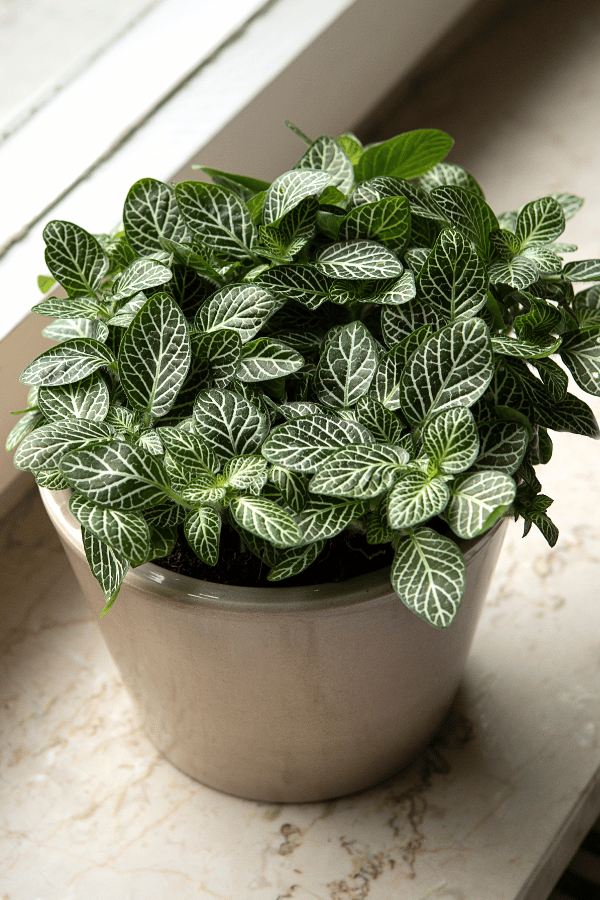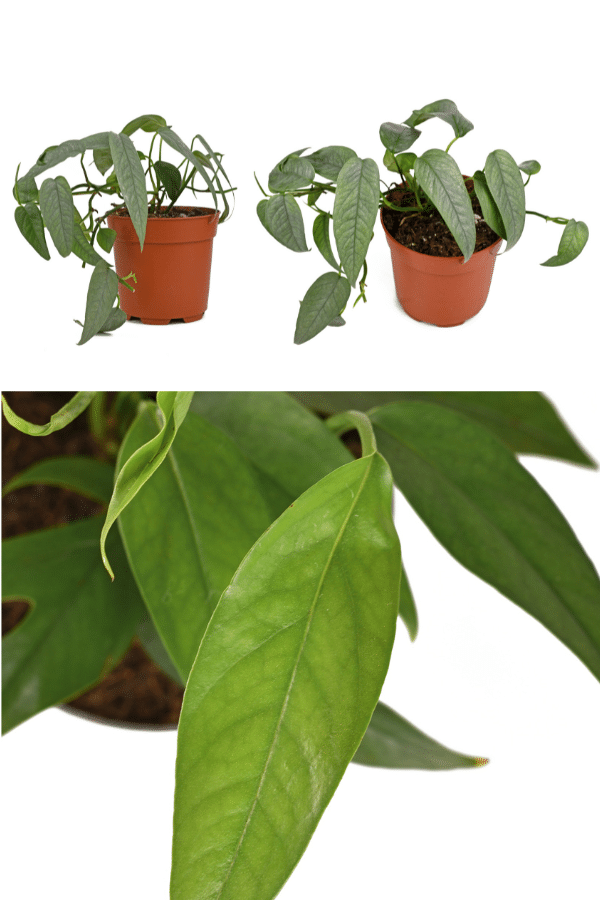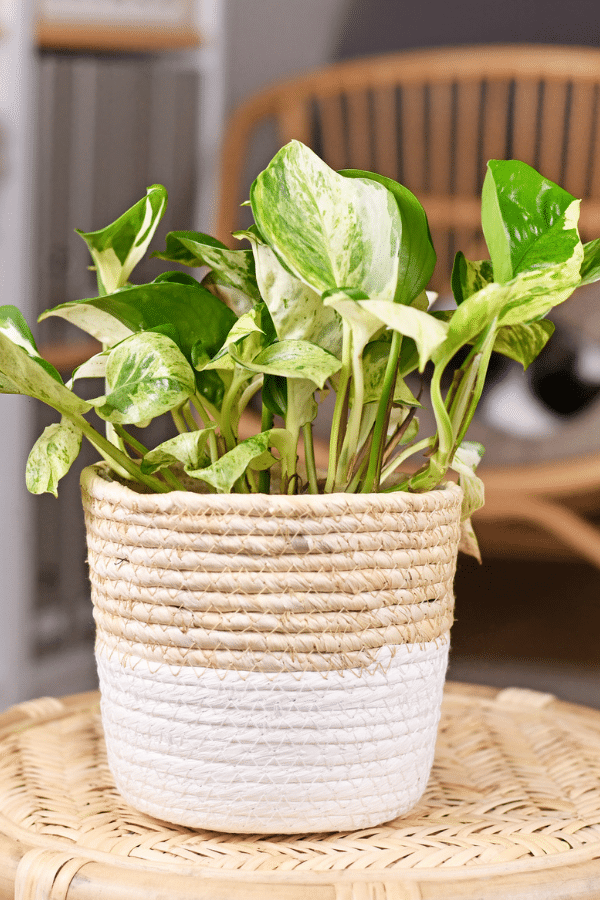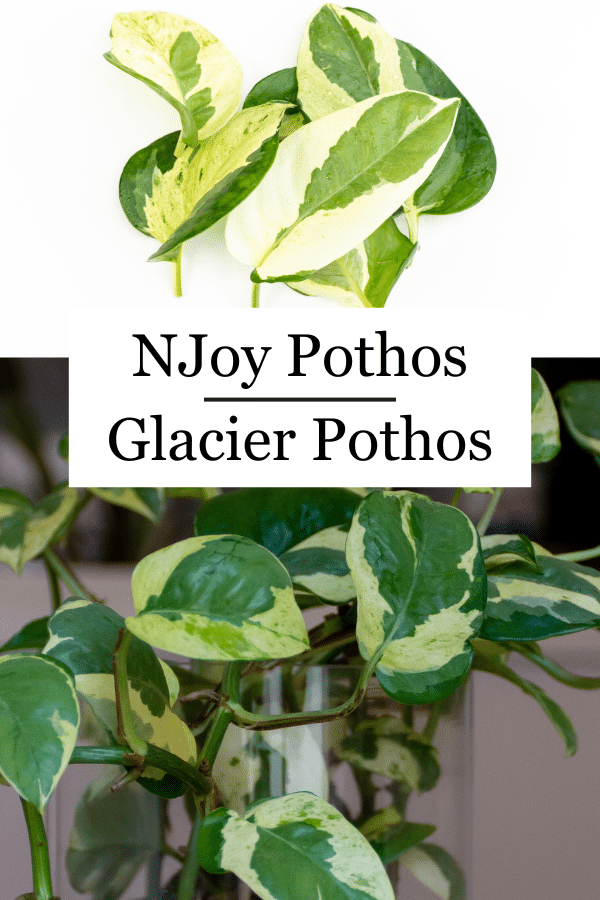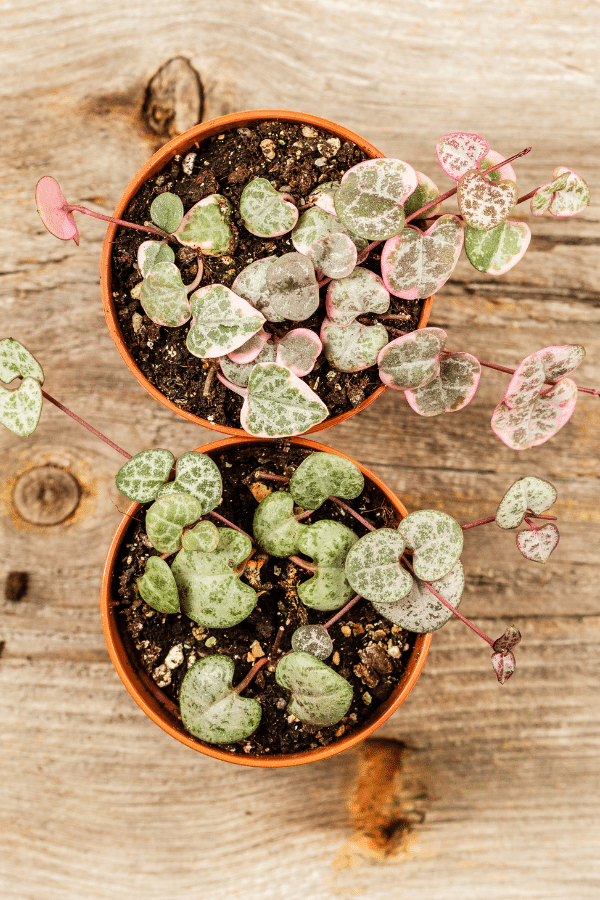Manjula Pothos vs Marble Queen Pothos
Although Manjula Pothos and Marble Queen Pothos appear to be very similar in how the two plants look, they are different varieties. Knowing the difference between Manjula Pothos and Marble Queen Pothos and how to pick them apart will help you care for each of these plants. By the end of this article, you’ll be able to understand what’s a Marble Queen Pothos and a Manjula Pothos when shopping in-store or online.
Manjula Pothos
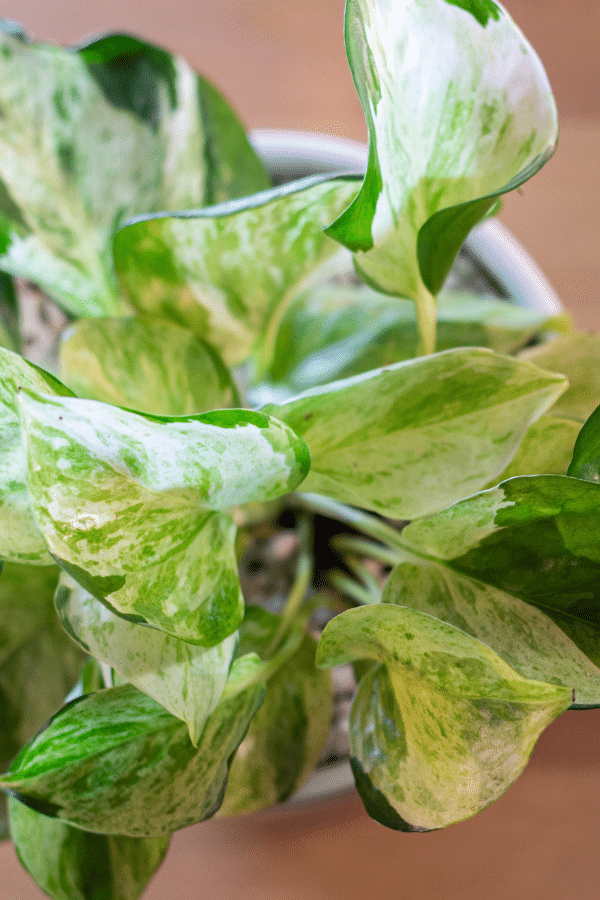
Epipremnum Aureum ‘Manjula’, also known as HANSOTI14 named after the guy who created it in a lab in India. This plant has beautiful heart-shaped wavy leaves and white, light yellow, green, and cream swirly variegated leaves. Manjula Pothos is harder to find than the other plant we are comparing it to, the Marble Queen Pothos.
Marble Queen Pothos
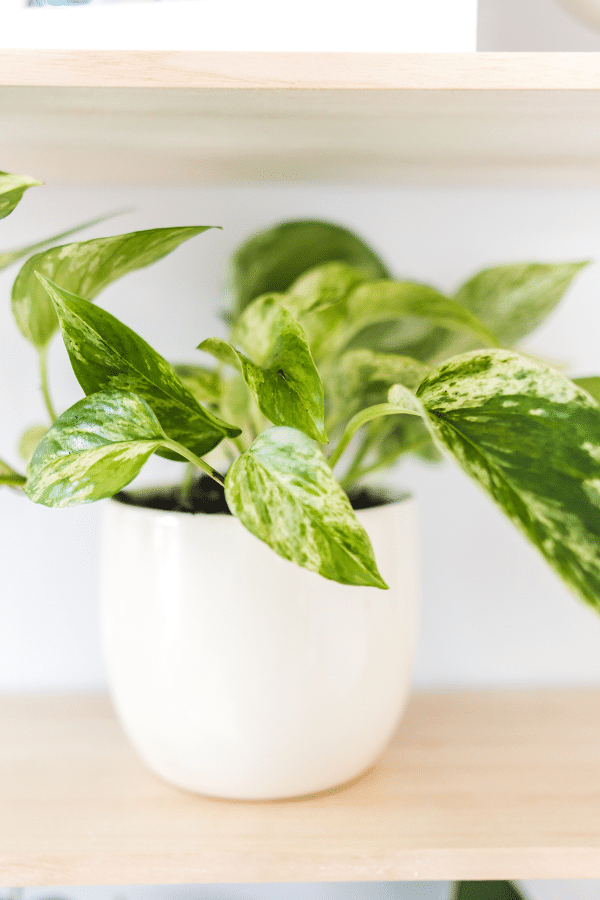
Epipremnum Aureum ‘Marble Queen’ Pothos is a lush, upright, trailing houseplant. Marble Queen has flat, big leaves with green, white, and yellow variegations. The growth rate on this pothos is fast and it is native to Southeast Asia. This plant is more common in stores or local nurseries than its Manjula counterpart.
The Difference Between Manjula Pothos & Marble Queen Pothos
What really stands out to differentiate Manjula Pothos from Marble Queen is the leaf design, growth rate, the variegations, and the popularity of these two plants.
Leaf Design
Leaf design is a way to tell the difference between Manjula and Marble Queen. Manjula Pothos has elongated, pointed leaves that are variegated with shades of green, cream, and white. The variegations are more pronounced and irregular, giving the plant a unique and striking appearance. On the other hand, Marble Queen Pothos has heart-shaped leaves with a marble-like pattern of green and white. The variegations are more evenly distributed, creating a softer and more delicate look. Even though both plants are visually stunning, they have distinct leaf designs that make them easy to tell apart.
Growth Rate
Manjula Pothos and Marble Queen Pothos differ in their growth rate. Manjula Pothos is a slower-growing plant and tends to have a more compact growth habit. It typically produces fewer and smaller leaves, making it a good option for smaller spaces. On the other hand, Marble Queen Pothos is a faster-growing plant and can quickly become quite large and bushy. It produces more leaves than Manjula Pothos, which can make it a great option for filling larger spaces. However, because of its fast growth rate, Marble Queen Pothos may require more frequent pruning and maintenance to keep it under control.
Variegations
You will find that Manjula Pothos has irregular and bold variegations that are shades of green, white, and cream. The variegations are more pronounced and striking, making it a highly sought-after plant among collectors. Marble Queen Pothos, on the other hand, has a more subtle and even variegation pattern, with white or cream-colored patches scattered throughout the leaves. While less dramatic than Manjula Pothos, Marble Queen Pothos is still a beautiful and popular plant for its soft, marbled appearance. Be sure that these plants get bright light to maintain their variegated patterns as they may lose their variegation in low-light conditions.
Popularity
Manjula Pothos and Marble Queen Pothos are both popular houseplants. Still, Manjula Pothos is rarer and more sought after by collectors. Manjula Pothos is a relatively new hybrid cultivar that was first introduced in 2011 and has since gained a cult following among houseplant enthusiasts. Its unique variegation pattern and slow growth rate make it a highly desirable plant, and it can be difficult to find in nurseries or online. On the other hand, Marble Queen Pothos is a more common cultivar that has been around for many years. It is widely available in nurseries and online.
The Similarities Between Manjula Pothos & Marble Queen Pothos
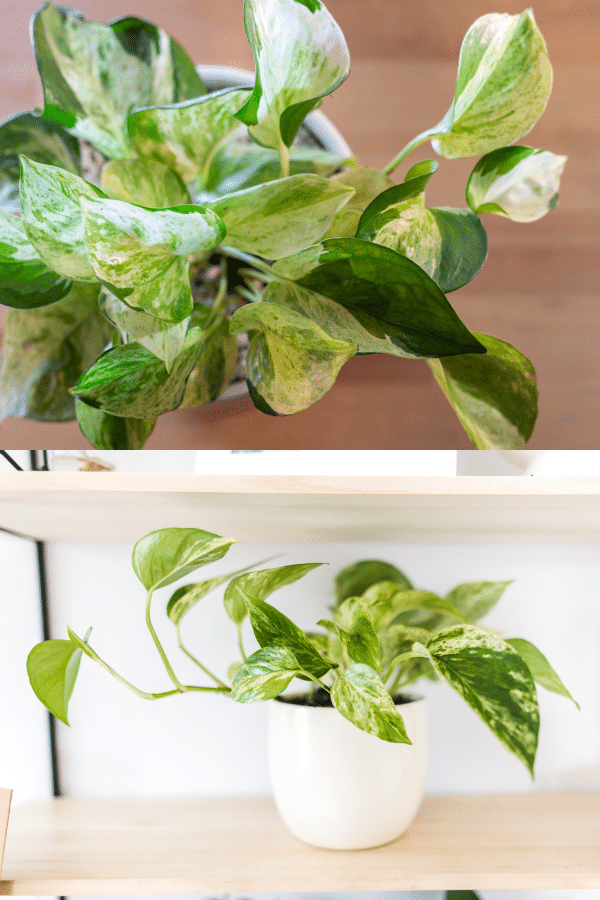
Propagation
Manjula Pothos and Marble Queen Pothos are easy to propagate and can be done through stem cuttings. Select a healthy stem with several leaves to propagate either plant and make a clean cut just below a node. Place the cutting in a jar of water or in moist potting soil, and keep it in a warm, bright location out of direct sunlight. After a few weeks, roots should start to develop, and the cutting can be planted in a pot with well-draining soil. Alternatively, both of these pothos varieties can be propagated via root division. Dig into the soil and divide an entire stem from the plant, this will have roots, and you can plant that directly into a new pot with fresh soil.
Toxicity
Manjula Pothos and Marble Queen Pothos share a similar quality in the fact that they are both toxic to pets and humans if ingested. They contain calcium oxalate crystals, which can cause irritation and swelling of the mouth, throat, and digestive tract. Ingesting large quantities of the plant can cause more severe symptoms, such as vomiting and difficulty breathing. Keep these plants out of reach of children and pets, and wash your hands thoroughly after handling them to avoid skin irritation.
Soil Requirements
Manjula Pothos and Marble Queen Pothos have similar soil requirements and prefer a well-draining soil mix that retains some moisture but does not become waterlogged. A high-quality potting mix containing peat moss or coco coir, perlite, orchid bark, and vermiculite is a good choice for both plants. Avoid using heavy or clay soils, which can retain too much moisture and cause root rot. Both plants can also benefit from adding organic matter, such as compost or worm castings, which can help improve soil structure and fertility. When repotting, choose a pot slightly larger than the current one, about one to two inches bigger, as these plants prefer to be somewhat root-bound. Allow the top inch of soil to dry out between waterings to prevent overwatering and root rot.
Light Requirements
Manjula Pothos and Marble Queen Pothos both prefer the same lighting requirements: bright indirect light but can tolerate lower light conditions. However, they do not tolerate direct sunlight, which can scorch their leaves and cause them to fade. The plants may become leggy and produce smaller leaves if grown in low light conditions. To maintain a full, bushy plant, provide adequate light and rotate the plant periodically to ensure even growth. If the plant is not getting enough light, the leaves may start to yellow or drop, indicating that it needs to be moved to a brighter location.
Repotting Requirements
Manjula Pothos and Marble Queen Pothos have similar repotting requirements and generally only need to be repotted occasionally. These plants prefer to be slightly root-bound and tolerate being in the same pot for several years. When repotting, choose a pot that is only slightly larger than the current one. Use a well-aerated soil mix for a healthy potting medium. Repot in the spring or summer, when the plant is actively growing. Signs that the plant needs to be repotted include roots growing out of the drainage holes, water pooling on the soil surface, or the plant becoming too large for its current pot.
Watering Requirements
Manjula Pothos and Marble Queen Pothos have similar watering requirements and prefer to be kept evenly moist but not soggy. These plants should be watered when the top inch of soil feels dry to the touch. If the leaves start to wilt or turn yellow, this may be a sign of overwatering or underwatering. Adjust the watering frequency based on the season and environmental conditions. You can water Manjula and Marble Queen Pothos the same.
Fertilizer Requirements
A balanced, water-soluble fertilizer with an N-P-K ratio of 20-20-20 or 10-10-10 can be used every two to four weeks during the growing season to provide the plant with the necessary nutrients. Always follow the instructions on the package to avoid over-fertilizing, which can lead to salt buildup in the soil and cause root burn. If the plant is actively growing, you can continue to fertilize both Manjula and Marble Queen in the “dormant” winter months. These plants can also benefit from occasional foliar feeding, where a diluted fertilizer solution is sprayed directly onto the leaves to provide nutrients and improve their overall health.
As you can see, there are a lot of similarities and differences between manjula pothos vs marble queen pothos. You can spot the differences by their leaf design, origin, and growth rate. But being in the same family, Epipremnum Aureum, their care is one in the same.

